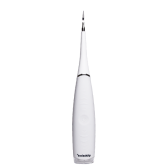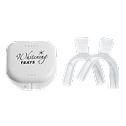Nail fungus can be uncomfortable and unpleasant to deal with, but thankfully, there are a number of different options that can help you recover quickly. Here’s how you can use tea tree oil for treating nail fungus.
You can apply tea tree oil, 1-2 drops of tea tree oil treatment with 12 drops of carrier oil topically on the affected area using a cotton pad. You can alternatively use 5 drops of tea tree oil treatment with ½ ounce of carrier oil in a warm water basin, soaking your feet in the stirred mixture for 20 minutes.
Now that you understand the gist of it, we’ll discuss why this treatment works and the additional steps you can take towards recovery. We have lots of content for your foot care, like guides for callus removal at home.
Does Tea Tree Oil Kill Fungus?

Tea tree oil is an essential oil that has a number of proven benefits, but does tea tree oil kill toenail fungus? Considering treating nail fungus is not its main benefit, it is understandable many people ask themselves: Is tea tree oil good for nail fungus?
Tea tree oil has antifungal and antiseptic properties that make it a suitable treatment for nail fungus. Just remember that no one treatment will get rid of nail fungus instantly.
You may have to go through treatment over the course of several weeks with tea tree oil for nail fungus, sometimes even months, before the fungus goes away. Even after that, you may want to keep up with treatments to make sure the damaged nail has time to recover.
The research on tea tree oil for toenail fungus is unsubstantiated, with some studies showing a marked improvement, while others did not show any improvement.
Specifically, the studies point to its effectiveness in reducing the growth of fungus Trichophyton rubrum. T. rubrum is a fungus generally associated with athlete’s foot and nail fungus.
High-Quality Nail Clipper for Men
With its sleek and modern design, the Swissklip 360 Finger Nail Clipper appeals to those seeking a High-Quality Nail Clipper for Men that is both Aesthetically Pleasing and Functional.
Benefits of Tea Tree Oil for Toenail Fungus
When it comes to natural remedies, tea tree oil for toenail fungus ranks among the most popular. Its antifungal properties have been heralded for generations, and many swear by its effectiveness. But what makes tea tree oil such an appealing solution?
Natural Solution: In an era where many are moving towards organic and natural remedies, tea tree oil offers a chemical-free alternative to combat toenail fungus.
Easily Accessible: Tea tree oil is widely available in most health stores and pharmacies, making it easy for those wanting to try out this remedy.
Economical: Compared to many over-the-counter treatments and prescriptions, using tea tree oil can be more cost-effective.
Versatility: Beyond treating nail fungus, tea tree oil boasts a multitude of other uses, from acne treatments to dandruff solutions.
However, it’s important to understand that while tea tree oil can be effective, it may not work for everyone. The severity and type of fungus, as well as how diligently you follow the treatment, can all influence the outcome.
Making Life Easier with a Toenail Fungus Treatment that contains Tea Tree Oil
While tea tree oil is a fantastic natural remedy for toenail fungus, not everyone has the time or patience for DIY treatments.
If you’re someone looking for an efficient, ready-to-use solution that incorporates the power of tea tree oil, Swissklip Toenail Fungus Treatment is your answer.
Here’s why the Swissklip Treatment can be a game-changer:
Convenience: Offers a hassle-free application. No need for dilution, no messy oil applications – just a straightforward, easy-to-use treatment.
Potent Formula: Combines the natural antifungal properties of tea tree oil with other active ingredients, creating a super effective solution against toenail fungus.
Safety and Efficiency: Ensures that the concentration of tea tree oil is just right, offering maximum benefits without the risk of skin irritations.
Compact and Travel-friendly: Comes in a handy stick form, making it perfect for those always on the move. Whether you’re traveling, at work, or just out and about, it fits perfectly in your bag.
Trust and Credibility: You’re not just banking on a brand. You’re trusting a product known for its effectiveness. Check out more about it here.
In the battle against toenail fungus, while many opt for traditional methods and treatments, sometimes, making life simpler with effective, ready-made solutions like Swissklip Toenail Fungus Treatment can be the key to swift recovery.
Testimonials: Tea Tree Oil Toenail Fungus Before and After
People around the globe have tried tea tree oil for their toenail fungus, and many have seen promising results. Here are a few testimonials:
- Mark from California says, “I had suffered from toenail fungus for years. After trying out numerous products, I decided to go natural. Using tea tree oil consistently for months did the trick. The difference in my toenails before and after the treatment was clear – they looked healthier and the discoloration was gone.”
- Sasha from New York mentions, “I was skeptical at first. But after diligently applying a diluted tea tree oil mixture for a couple of months, I began to notice improvements. It’s a slow process, but it works.”
Apply Tea Tree Oil for Fungus on Toenails Alongside Other Treatment

One older study from 1999 demonstrated that some patients were able to effectively manage nail fungus using butenafine hydrochloride cream in conjunction with tea tree oil.
Of course, it’s hard to say how much either component contributed to patient recovery, but what is conclusive is that after 16 weeks of treatment, 80% of the participants in the control group saw their toenail fungus cured without relapse.
None in the placebo group cured their nail fungus. The bottom line is that tea tree oil may have some merit used alongside other treatments.
How to Use Tea Tree Oil for Nail Fungus
Most of us don’t know exactly how to use tea tree oil for nail fungus, but it’s usually considered to be safe using tea tree oil on your skin, so you might want to perform a test beforehand to see if your skin reacts negatively to it.
If you get excessive dryness, stinging, or redness after applying one drop of tea tree oil, consider a different treatment.
Tea tree oil can cause skin irritation or allergic reactions in some people, and if you are pregnant or breastfeeding, then it’s best to consult your doctor before using this treatment.
If you don’t experience any adverse effects, then you can use up to 3 drops of tea tree oil applied topically to the skin.
How to Dilute Tea Tree for Toenail Fungus?

For every 1-2 drops of tea tree oil you apply, add 12 drops of a carrier oil. These help to dilute the concentration of the essential oil.
Use a cotton swab to apply it directly to the area for a couple of minutes. If you prefer, you can also do a foot soak a couple of times per week. The same principles apply; if you experience irritation or stinging, dilute the concentration further or seek different treatment.
To put tea tree oil into a foot soak, add 5 drops of tea tree oil with a ½ ounce of carrier oil, mix, and stir in a basin of warm water.
Soak for about 20 minutes. Again, you will likely need to repeat this treatment several times per week over the course of several weeks before you see any results. You could also alternate foot soaks, using hydrogen peroxide for nail fungus during one session and tea tree oil in the next.
When you’re done with your foot soak, pat your feet down carefully. Fungus thrives in damp environments, so if you don’t dry off your feet afterwards, then you could be worsening the spread rather than making it better.
What to Do During Tea Tree Oil for Toenail Fungus Treatment

During your course of treatment, you’ll want to make sure you stick to proper foot hygiene practices. Doing so will not only aid the recovery process, but it will also prevent reinfection and help you avoid foot fungus in the future.
Start by making sure you keep the affected area, including your nails, as clean and dry as possible. Wash your hands carefully after each session to avoid spreading the fungus.
It’s also wise to keep your nails nice and tidy while you heal. Afflicted nails can become thick and crumbly, making them uncomfortable. While it may cause some discomfort to trim them, doing so helps the nail breathe and removes dead nail cells that may be contributing to the growth of the fungus.
The most important thing you can do to prevent reinfection is to be careful where you walk. Walking barefoot in damp public areas is the most common cause of nail fungus. That includes places like swimming pools, locker rooms, and gyms.
Your shoes may also be to blame. Any shoe that doesn’t breathe well and collects sweat is encouraging the onset of fungus. Fungi breed and gather in damp, moist environments, so if your feet tend to sweat a lot, consider investing in some breathable shoes during the recovery process.
Preventative Tips and Tricks
Future prevention is helpful not only to avoid nail fungus in the future, but also to aid the recovery process.
A good antifungal moisturizer or cream can work wonders, both in the recovery process and as a day-to-day practice to prevent nail fungus.
Keep your skin clean and dry. Take additional precautions if you have any cracking or sores on your feet, as these can be potential entry points for bacteria and fungi.
Expert Views on Using Tea Tree Oil for Toenail Fungus
While many home remedies like tea tree oil have found favor among those battling toenail fungus, what do experts say?
Dermatologists and podiatrists often agree on the antifungal properties of tea tree oil. However, they also stress the importance of using it correctly. Over-application or using undiluted tea tree oil can lead to skin irritations.
Furthermore, for those wondering how to dilute tea tree oil for toenail fungus, professionals recommend a patch test first. This will ensure you don’t have an allergic reaction and can safely proceed with treatment.
A Holistic Approach: Diet, Lifestyle, and Tea Tree Oil for Toenail Fungus
In addition to topical treatments, it’s beneficial to adopt a holistic approach to tackle toenail fungus. Your diet and lifestyle play a significant role in the health of your nails.
- Diet: Consuming foods rich in antifungal properties like garlic, turmeric, and coconut oil can boost your internal defense against fungi.
- Hygiene: Ensure you keep your feet clean and dry. Use antifungal powders or sprays inside shoes to prevent fungal growth.
- Regular Check-ups: Schedule regular visits to a podiatrist, especially if you’re prone to toenail fungus or have recurring issues.
Combining these lifestyle changes with the consistent application of tea tree oil can increase the chances of successfully treating toenail fungus.
Final Thoughts

Tea tree oil is an effective treatment for toenail fungus in some cases, although it’s best used as a supplement alongside other courses of treatment. As with any home remedy, if you see no improvement after a short while, it’s best to consult your podiatrist for further instruction.
With that being said, the majority of Americans who get nail fungus can cure it using only at-home remedies. If you have tea tree oil on hand, it’s well worth try to apply it topically or in a foot soak to see if there’s any improvement. You might just find the tea tree oil toenail fungus before and after is a big difference!





































